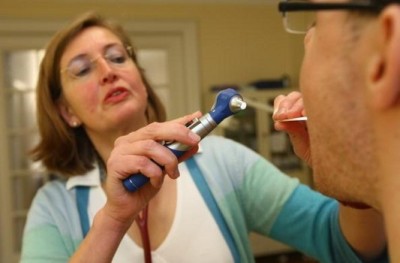Profile

Who: Kimball Corson. Text and Photos not disclaimed or that are obviously not mine are copyright (c) Kimball Corson 2004-2016
Port: Lake Pleasant, AZ
Altaira Wandering the Oceans
Favorites
- 7 Seas Cruising Association
- American Sailing Association
- Buoyweather Service
- CDC Traveler's Heath Advisories
- Cruiser Log venue
- Cruisers Forum
- Cruising Club of America
- Cruising Resources
- Cruising World Magazine
- Earthrace World Record
- Economic and Financial Indicators
- Economist Magazine
- Equipmment and Boat Reviews
- Float Plan Form
- Greenpeace Int'l
- Grib File Access
- Heavy Weather Sailing
- IMS Certificates
- Inland Travel: Expedia
- Intrade Prediction Markets
- Latitude 38
- London Financial Times
- Marine Books and Charts
- Marine Radios
- Nature Conservancy for Oceans
- New York Times
- NOAA Hurricane Analysis
- NOAA Weather Forecasts
- Noonsite, World Cruisng Info
- Ocean Cruising Club
- Overseas Mail Forwarding Services
- Practical Sailor Magazine
- RGE Economic Monitor
- Sail Gear Source I
- Sail Gear Source II
- Sail Gear Source III
- Sail Gear Source IV
- Sailboat Selection for Offshore Use
- Sailboats for Sale
- Sailing Items Sources Links
- SailMail (Marine Radio)
- Sailnet Sailing Information
- Seeking Alpha
- Tide & Current Program
- Tide Prediction Programs
- Tides & Currents
- TruthDig in the News
- U.S. Sailing Association
- Univ of Chicago Law Faculty Blog
- US State Dept Travel Advisories
- Voyage Planning (with pilot charts)
- Wall Street Journal
- Washington Post
- Weather.com
- Weather: MagicSeaweed
- Weather: Wetsand
- WinLink (Ham Radio)
- World Clock + Time Zones
09 April 2018 | Pago Pago, American Samoa
10 March 2018 | Pago Pago, American Samoa
10 March 2018 | Pago Pago, American Samoa
10 March 2018 | Pago Pago, American Samoa
22 August 2017 | Pago Pago, American Samoa
22 August 2017 | Pago Pago, American Samoa
22 August 2017 | Pago Pago, American Samoa
22 August 2017 | Pago Pago, American Samoa
22 August 2017 | Pago Pago, American Samoa
22 August 2017 | Pago Pago, American Samoa
22 August 2017 | Pago Pago, American Samoa
22 August 2017 | Pago Pago, American Samoa
22 August 2017 | Pago Pago, American Samoa
22 August 2017 | Pago Pago, American Samoa
22 August 2017 | Pago Pago, American Samoa
22 August 2017 | Pago Pago, American Samoa
22 August 2017 | Pago Pago, American Samoa
22 August 2017 | Pago Pago, American Samoa
22 August 2017 | Pago Pago, American Samoa
09 August 2017 | Pago Pago, American Samoa
America’s Health Care System is a Huge Failure
09 January 2013 | Pago Pago, American Samoa
Kimball Corson

America's Health Care System is a Huge Failure
The other advanced countries of the world with national health care systems do much better than we do. We are the only advanced nation without a national health care system. Our works worse than any in terms of it costs and its results.
Americans Pay More and Get Worse Health Care than Other Advanced Nations
The Per Capita Costs of Health Care in the Advanced Nations
The average annual cost of health care per capita is about $3,000 in most of the modern world, but almost $5,800 in the US. Next, we have Switzerland, Iceland and France at just $3,000 coming in at second place, but still with the US almost double that. Finally, the other advanced nations have annual costs per capita of from $2,200 to $2,900, with most of the Scandinavian countries in that group, with costs less than half the US.
Now where do you suppose all that extra money paid in the US goes? Who pockets it? Shouldn't you know?
So Called Benefits or Results
So what do we get for all this extra health care cost? The answer is much less health care and much worse health.
Americans live shorter lives and experience more injuries and illnesses than people in other high-income countries. A growing body of research is calling attention to this problem. The U.S. health disadvantage cannot be attributed solely to the adverse health status of racial or ethnic minorities or poor people, since recent studies suggest that even highly advantaged Americans
may be in worse health than their counterparts in other countries.
The Inferior Health Status of Americans
Health care outcomes in the United States have been compared
with those of 16 comparable high-income or "peer" countries: Australia, Austria, Canada, Denmark, Finland, France, Germany, Italy, Japan, Norway, Portugal, Spain, Sweden, Switzerland, the Netherlands, and the United Kingdom. Historical trends dating back several decades were examined, but with a focus on the more extensive data available from the late 1990's to 2008. Over this time period, a strikingly consistent and pervasive pattern of higher mortality and inferior health in the United States is found in the US,
beginning at birth:
• For many years, Americans have had a shorter life expectancy than people in almost all of the peer countries. For example, as of 2007, U.S. males lived 3.7 fewer years than Swiss males and U.S. females lived 5.2 fewer years than Japanese females.
• For the past three decades, this difference in life expectancy has
been growing, especially among women.
• The health disadvantage is pervasive--it affects all age groups up
to age 75 and is observed for multiple diseases, biological and
behavioral risk factors, and injuries.
More specifically, when compared with the average for peer countries, the United States fares worse in nine major health domains:
1. Adverse birth outcomes: For decades, the United States has experienced the highest infant mortality rate of high-income countries and also ranks poorly on other birth outcomes, such as low birth weight. American children are less likely to live to age 5 than children in other high-income countries.
2. Injuries and homicides: Deaths from motor vehicle crashes, non-transportation-related injuries, and violence occur at much higher rates in the United States than in other countries and are a leading cause of death in children, adolescents, and young adults. Since the 1950's, U.S. adolescents and young adults have died at higher rates from traffic accidents and homicide than their counterparts in other countries.
3. Adolescent pregnancy and sexually transmitted infections: Since
the 1990's, among high-income countries, U.S. adolescents have
had the highest rate of pregnancies and are more likely to acquire
sexually transmitted infections.
4. HIV and AIDS: The United States has the second highest prevalence of HIV infection among the 17 peer countries and the highest incidence of AIDS.
5. Drug-related mortality: Americans lose more years of life to alcohol and other drugs than people in peer countries, even when deaths from drunk driving are excluded.
6. Obesity and diabetes: For decades, the United States has had the highest obesity rate among high-income countries. High prevalence rates for obesity are seen in U.S. children and in every age group thereafter. From age 20 onward, U.S. adults have among the highest prevalence rates of diabetes (and high plasma glucose levels) among peer countries.
7. Heart disease: The U.S. death rate from ischemic heart disease is the second highest among the 17 peer countries. Americans reach age 50 with a less favorable cardiovascular risk profile than their peers in Europe, and adults over age 50 are more likely to develop and die from cardiovascular disease than are older adults in other high-income countries.
8. Chronic lung disease: Lung disease is more prevalent and associated with higher mortality in the United States than in the United Kingdom and other European countries.
9. Disability: Older U.S. adults report a higher prevalence of arthritis and activity limitations than their counterparts in the United Kingdom, other European countries, and Japan.
Since 1980, the United States has had the first or second lowest probability of surviving to age 50 among the 17 peer countries. Americans who do reach age 50 generally arrive at this age in poorer health than their counterparts in other high-income countries, and as older adults they face greater morbidity and mortality from chronic diseases that arise from risk factors (e.g., smoking, obesity, diabetes) that are often established earlier in life.
Finally, the US's large population of recent immigrants is generally in better health than native-born Americans. They give our averages a boost.
Do you still like the American health care system and think it is the best. If so, you need to learn and adjust.
The other advanced countries of the world with national health care systems do much better than we do. We are the only advanced nation without a national health care system. Our works worse than any in terms of it costs and its results.
Americans Pay More and Get Worse Health Care than Other Advanced Nations
The Per Capita Costs of Health Care in the Advanced Nations
The average annual cost of health care per capita is about $3,000 in most of the modern world, but almost $5,800 in the US. Next, we have Switzerland, Iceland and France at just $3,000 coming in at second place, but still with the US almost double that. Finally, the other advanced nations have annual costs per capita of from $2,200 to $2,900, with most of the Scandinavian countries in that group, with costs less than half the US.
Now where do you suppose all that extra money paid in the US goes? Who pockets it? Shouldn't you know?
So Called Benefits or Results
So what do we get for all this extra health care cost? The answer is much less health care and much worse health.
Americans live shorter lives and experience more injuries and illnesses than people in other high-income countries. A growing body of research is calling attention to this problem. The U.S. health disadvantage cannot be attributed solely to the adverse health status of racial or ethnic minorities or poor people, since recent studies suggest that even highly advantaged Americans
may be in worse health than their counterparts in other countries.
The Inferior Health Status of Americans
Health care outcomes in the United States have been compared
with those of 16 comparable high-income or "peer" countries: Australia, Austria, Canada, Denmark, Finland, France, Germany, Italy, Japan, Norway, Portugal, Spain, Sweden, Switzerland, the Netherlands, and the United Kingdom. Historical trends dating back several decades were examined, but with a focus on the more extensive data available from the late 1990's to 2008. Over this time period, a strikingly consistent and pervasive pattern of higher mortality and inferior health in the United States is found in the US,
beginning at birth:
• For many years, Americans have had a shorter life expectancy than people in almost all of the peer countries. For example, as of 2007, U.S. males lived 3.7 fewer years than Swiss males and U.S. females lived 5.2 fewer years than Japanese females.
• For the past three decades, this difference in life expectancy has
been growing, especially among women.
• The health disadvantage is pervasive--it affects all age groups up
to age 75 and is observed for multiple diseases, biological and
behavioral risk factors, and injuries.
More specifically, when compared with the average for peer countries, the United States fares worse in nine major health domains:
1. Adverse birth outcomes: For decades, the United States has experienced the highest infant mortality rate of high-income countries and also ranks poorly on other birth outcomes, such as low birth weight. American children are less likely to live to age 5 than children in other high-income countries.
2. Injuries and homicides: Deaths from motor vehicle crashes, non-transportation-related injuries, and violence occur at much higher rates in the United States than in other countries and are a leading cause of death in children, adolescents, and young adults. Since the 1950's, U.S. adolescents and young adults have died at higher rates from traffic accidents and homicide than their counterparts in other countries.
3. Adolescent pregnancy and sexually transmitted infections: Since
the 1990's, among high-income countries, U.S. adolescents have
had the highest rate of pregnancies and are more likely to acquire
sexually transmitted infections.
4. HIV and AIDS: The United States has the second highest prevalence of HIV infection among the 17 peer countries and the highest incidence of AIDS.
5. Drug-related mortality: Americans lose more years of life to alcohol and other drugs than people in peer countries, even when deaths from drunk driving are excluded.
6. Obesity and diabetes: For decades, the United States has had the highest obesity rate among high-income countries. High prevalence rates for obesity are seen in U.S. children and in every age group thereafter. From age 20 onward, U.S. adults have among the highest prevalence rates of diabetes (and high plasma glucose levels) among peer countries.
7. Heart disease: The U.S. death rate from ischemic heart disease is the second highest among the 17 peer countries. Americans reach age 50 with a less favorable cardiovascular risk profile than their peers in Europe, and adults over age 50 are more likely to develop and die from cardiovascular disease than are older adults in other high-income countries.
8. Chronic lung disease: Lung disease is more prevalent and associated with higher mortality in the United States than in the United Kingdom and other European countries.
9. Disability: Older U.S. adults report a higher prevalence of arthritis and activity limitations than their counterparts in the United Kingdom, other European countries, and Japan.
Since 1980, the United States has had the first or second lowest probability of surviving to age 50 among the 17 peer countries. Americans who do reach age 50 generally arrive at this age in poorer health than their counterparts in other high-income countries, and as older adults they face greater morbidity and mortality from chronic diseases that arise from risk factors (e.g., smoking, obesity, diabetes) that are often established earlier in life.
Finally, the US's large population of recent immigrants is generally in better health than native-born Americans. They give our averages a boost.
Do you still like the American health care system and think it is the best. If so, you need to learn and adjust.
Comments
| Vessel Name: | Altaira |
| Vessel Make/Model: | A Fair Weather Mariner 39 is a fast (PHRF 132), heavily ballasted (43%), high-aspect (6:1), stiff, comfortable, offshore performance cruiser by Bob Perry that goes to wind well (30 deg w/ good headway) and is also good up and down the Beaufort scale. |
| Hailing Port: | Lake Pleasant, AZ |
| Crew: | Kimball Corson. Text and Photos not disclaimed or that are obviously not mine are copyright (c) Kimball Corson 2004-2016 |
| About: | |
| Extra: |
Altaira's Photos - Main
No items in this gallery.
Profile

Who: Kimball Corson. Text and Photos not disclaimed or that are obviously not mine are copyright (c) Kimball Corson 2004-2016
Port: Lake Pleasant, AZ
Altaira Wandering the Oceans
Favorites
- 7 Seas Cruising Association
- American Sailing Association
- Buoyweather Service
- CDC Traveler's Heath Advisories
- Cruiser Log venue
- Cruisers Forum
- Cruising Club of America
- Cruising Resources
- Cruising World Magazine
- Earthrace World Record
- Economic and Financial Indicators
- Economist Magazine
- Equipmment and Boat Reviews
- Float Plan Form
- Greenpeace Int'l
- Grib File Access
- Heavy Weather Sailing
- IMS Certificates
- Inland Travel: Expedia
- Intrade Prediction Markets
- Latitude 38
- London Financial Times
- Marine Books and Charts
- Marine Radios
- Nature Conservancy for Oceans
- New York Times
- NOAA Hurricane Analysis
- NOAA Weather Forecasts
- Noonsite, World Cruisng Info
- Ocean Cruising Club
- Overseas Mail Forwarding Services
- Practical Sailor Magazine
- RGE Economic Monitor
- Sail Gear Source I
- Sail Gear Source II
- Sail Gear Source III
- Sail Gear Source IV
- Sailboat Selection for Offshore Use
- Sailboats for Sale
- Sailing Items Sources Links
- SailMail (Marine Radio)
- Sailnet Sailing Information
- Seeking Alpha
- Tide & Current Program
- Tide Prediction Programs
- Tides & Currents
- TruthDig in the News
- U.S. Sailing Association
- Univ of Chicago Law Faculty Blog
- US State Dept Travel Advisories
- Voyage Planning (with pilot charts)
- Wall Street Journal
- Washington Post
- Weather.com
- Weather: MagicSeaweed
- Weather: Wetsand
- WinLink (Ham Radio)
- World Clock + Time Zones
